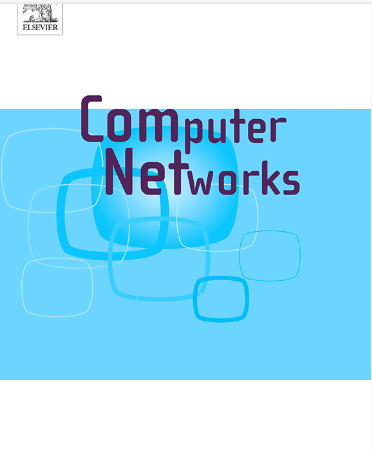基于FPGA的5G无线网络并行矢量矩阵计算高效QC-LDPC信道编码器/解码器架构
IF 4.4
2区 计算机科学
Q1 COMPUTER SCIENCE, HARDWARE & ARCHITECTURE
引用次数: 0
摘要
空间数据系统咨询委员会(CCSDS)选择了准循环低密度奇偶校验(QC-LDPC)码,以提高各种无线通信系统的纠错性能。越来越多的QC-LDPC码的使用需要一个低延迟和低复杂性的编码器/解码器架构,可以在实际的基带芯片中实现。然而,在QC-LDPC编码过程中,多个扩展因子的信息位宽存储会降低编码器的吞吐量和适应性。为了通过最小化信息位宽度来压缩扩展因子并提高编码器的重构能力,本研究开发了一种基于现场可编程门阵列(FPGA)的具有信息位重排序机制(IBRM)的QC-LDPC编码器。此外,利用并行向量矩阵计算(PVMC)方法降低了奇偶校验矩阵(PCM)的计算复杂度。然后,解码过程通过启用对数似然比(LLR)标记方法的解码器架构进行,从而降低了所建议的解码器架构的计算复杂度。此外,基本的加减法操作由可重构的统一加减法单元(RUAS)执行,从而降低了解码器体系结构的总体复杂性。最后,利用Xilinx Verilog编码和Matlab,在FPGA上实现了所提出的编/解码器的VLSI架构。分析结果表明,该编码器结构的吞吐量为11.974 Gbps,时钟频率(CF)为455.913 mhz。同样,解码器消耗0.002193 (μs)的延迟来完成解码过程。本文章由计算机程序翻译,如有差异,请以英文原文为准。
An Efficient QC-LDPC channel encoder/decoder architecture with parallel vector-matrix computations for 5G wireless networks on FPGA
The Consultative Committee for Space Data Systems (CCSDS) has selected quasi-cyclic low-density parity-check (QC-LDPC) codes to enhance error correction performance in diverse wireless communication systems. The growing use of QC-LDPC codes necessitates a low-latency and low-complexity encoder/decoder architecture that may be implemented in practical baseband chips. However, the storage of information bit widths with multiple expansion factors would deteriorate the encoder's throughput and adaptability in a QC-LDPC encoding process. In order to compress the expansion factors and improve the encoder's reconfiguration capability by minimizing the information bits width, a Field Programmable Gate Array (FPGA) enabled QC-LDPC encoder with an information bits reordering mechanism (IBRM) is developed in this study. Additionally, the complexity of calculating the parity check matrix (PCM) is reduced by utilizing the parallel vector-matrix computations (PVMC) method. The decoding process is then carried out by a new logarithmic likelihood-ratio (LLR) tagging method-enabled decoder architecture, which reduces the computational complexity of the suggested decoder architecture. Furthermore, the basic addition and subtraction operations are carried out by a reconfigurable unified adder and subtractor unit (RUAS) that reduces the overall complexity of the decoder architecture. Finally, using Xilinx Verilog coding and Matlab, the VLSI architectures of the proposed encoder/decoder are implemented in FPGA. The analysis of the results shows that the proposed encoder architecture achieves a throughput of 11.974 Gbps and a clock frequency (CF) of 455 .913MHz. Likewise, the decoder consumes 0.002193 latency to complete the decoding process.
求助全文
通过发布文献求助,成功后即可免费获取论文全文。
去求助
来源期刊

Computer Networks
工程技术-电信学
CiteScore
10.80
自引率
3.60%
发文量
434
审稿时长
8.6 months
期刊介绍:
Computer Networks is an international, archival journal providing a publication vehicle for complete coverage of all topics of interest to those involved in the computer communications networking area. The audience includes researchers, managers and operators of networks as well as designers and implementors. The Editorial Board will consider any material for publication that is of interest to those groups.
 求助内容:
求助内容: 应助结果提醒方式:
应助结果提醒方式:


